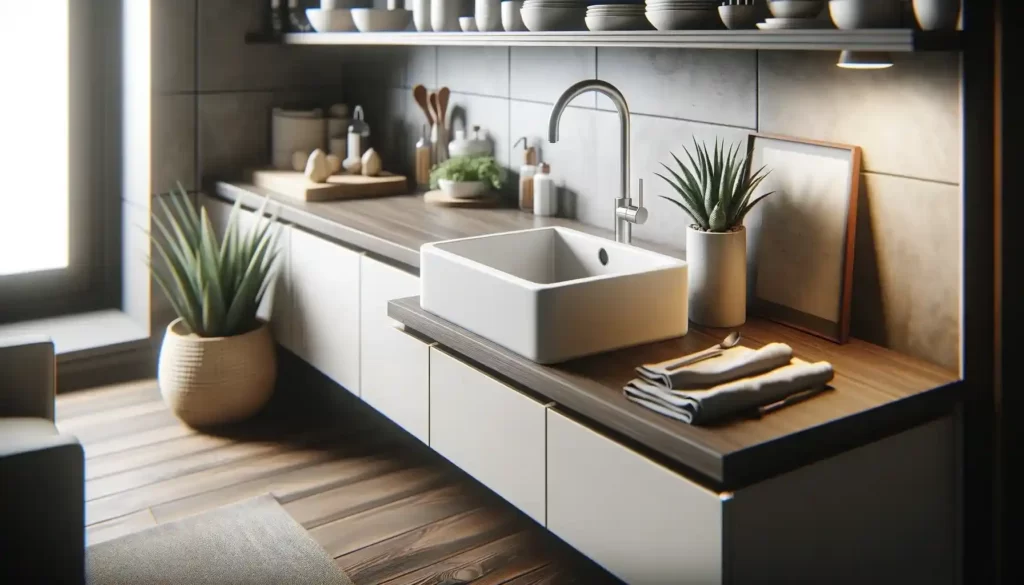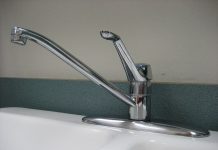Thinking about giving your kitchen or bathroom a new look? The sink you choose is super important for both style and practical use. You’ve probably heard of porcelain and ceramic sinks – they’re pretty popular. But what’s the difference between them? Don’t worry, we’ve got a simple guide to help you figure out which one is just right for your home.
Understanding Porcelain and Ceramic
Porcelain is a type of ceramic but with finer clay and fired at higher temperatures. This process makes porcelain denser, less porous, and often more durable than regular ceramic. On the other hand, ceramic sinks are made from a broader category of clay and kiln-fired at a variety of temperatures.
Pros and Cons
Porcelain Sinks
- Pros: Known for their durability, porcelain sinks resist staining and maintain an elegant, glossy finish for years. They can bear heavy use, making them ideal for busy households.
- Cons: Porcelain can be pricier and heavier, making installation more challenging. They can also chip or crack if something hard hits them.

Ceramic Sinks
- Pros: Ceramic sinks are more budget-friendly and offer a wide range of designs. They are relatively easy to clean and maintain.
- Cons: These sinks are less durable than porcelain and may crack or chip if they get hit hard.

Difference Between Porcelain Vs Ceramic Sink
Get to know the main differences between porcelain and ceramic. While they might seem similar, they each have unique qualities that set them apart in both looks and performance. Let us start.
1. Environment-Friendliness
Both are environmentally friendly. The materials can be recycled into tiles or used in road construction.
2. Durability
Both sinks are durable. However, if something were to strike against a ceramic force with a bit of force, it would shatter. It does not make ceramic sinks any less durable. After all, what are the chances of hitting the ceramic bathroom sink with something? But we will be honest. Porcelain sinks are much more durable than ceramic sinks, and the reason is porcelain contains steel. Secondly, it is heated at high temperatures and goes under considerable pressure. Thus, porcelain comes out a lot stronger than ceramic. So, in the porcelain sink vs ceramic sink debate, porcelain is the winner.
3. Cost
When it comes to cost, porcelain is a bit cheaper than ceramic. You can get a top-quality porcelain sink for a few hundred dollars. For ceramic sinks, the prices vary greatly. If you go for premium ceramic sinks, they can cost more than the best porcelain sinks available in the market right now.
4. Resale Value
Whether we like to admit it or not, we think about the resale value whenever we undertake remodeling work or build a place from scratch. Questions like, ‘will this material help me get a better price for this place?’ are all too common. There is nothing wrong with this approach either. If you are getting good value for something, you should sell it and reinvest the money in another project.
What about porcelain or ceramic sinks? Do they increase the resale value? Porcelain is the winner in this case. The reason is that porcelain sinks are expensive and durable. Thus, they are likely to fetch a higher value should you opt to sell your place at any time in the future.
You might also interested to read: Drop in Sink vs Undermount
5. Water Resistance
There is no doubt that the sink will see a lot of water. So, you will need a sink that is the least porous. In other words, it must not absorb water; otherwise, it will start to crack. Ceramic sinks must be glazed to decrease the porosity. Even then, they do absorb some water, reducing their durability. Porcelain sinks are less porous than ceramic. So, the answer to which is better porcelain or ceramic sink in terms of water resistance is porcelain.
6. Scratch Resistance
The harder the surface, the higher the scratch resistance. By now, you already know that porcelain is harder than ceramic. However, with proper care and maintenance, you can prevent scratches on your ceramic sink.
7. Repair & Maintenance
If your porcelain sink runs into problems, it is difficult to repair it and costly too. On the other hand, ceramic sinks are easy to repair and do not cost as much as porcelain. Both require an equal amount of maintenance to ensure their shine and durability. However, ceramic sinks require frequent deep cleaning.
8. Design & Colors
Ceramic sinks come in various designs and colors. You can get confused as to which one you should buy due to so many options. Porcelain is equally versatile. However, one thing you must keep in mind is that porcelain sinks usually come in white. If you want it in your preferred color, it can be challenging to find it. You can custom order it, but it will cost you a lot.
9. Installation and Compatibility
Both types require careful installation, often best handled by professionals. They are compatible with most countertop materials but check weight compatibility, especially with porcelain sinks.
Wrap Up
Porcelain and ceramic sinks each have their unique advantages. Porcelain offers durability and elegance, while ceramic provides versatility and affordability.
Consider your budget, the sink’s usage, and your design preferences. For a busy family kitchen, a durable porcelain sink might be ideal. If you’re after variety in design or need a cost-effective option, ceramic is a great choice.













